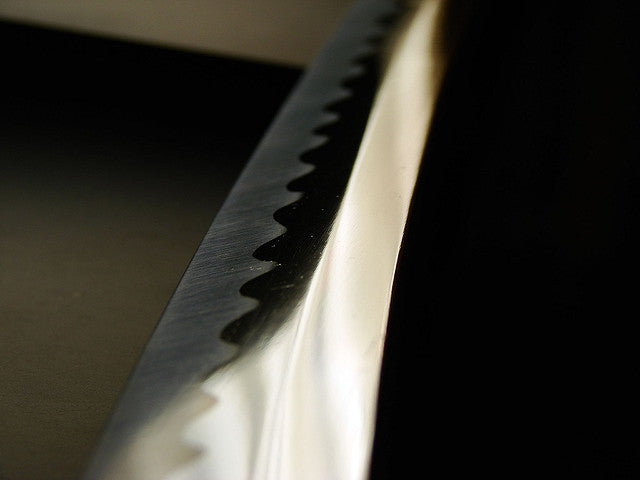Votre panier est vide

 Japanese swords are often categorized according to the time period in which they were produced. Bladesmiths in Japan have pioneered dozens of different swords, some of which include the chokuto, tsurgi, tachi, tanto, kodachi, odachi, uchigatana, katana and wakizashi. While each of these swords has its own unique characteristics, they can all be categorized according to when they were produced. Gendaito, for example, refers to Japanese swords produced in a specific time period.
Japanese swords are often categorized according to the time period in which they were produced. Bladesmiths in Japan have pioneered dozens of different swords, some of which include the chokuto, tsurgi, tachi, tanto, kodachi, odachi, uchigatana, katana and wakizashi. While each of these swords has its own unique characteristics, they can all be categorized according to when they were produced. Gendaito, for example, refers to Japanese swords produced in a specific time period.
Gendaito Swords Explained
The term "gendaito" refers to Japanese swords produced during 1876 to 1945. Japanese bladesmiths have produced swords for centuries, with some of the region's first swords dating back to around 300 to 500 A.D. There were still swords in Japan before this era, though they were believed to have come from China. It wasn't until 300 to 500 A.D. when Japan began making its own swords. Modern swords produced in Japan from 1876 to 1945 are known as gendaito.
Why were swords produced from 1876 to 1945 classified as gendaito exactly? Well, 1876 was an important year for Japan. During this time, the Japanese government passed the Halaitorei Edict. Also known as the Sword Abolishment Edict, it sought to ban the act of carrying swords in public among the general population. There were a few exceptions to the Halaitorei Edict. Former daimyo, military servicemembers and law enforcement officials, for example, could still carry swords in public. The general population, however, could not. This resulted in lower-quality swords being produced, so these swords were classified as gendaito to distinguish them from those produced during other periods.
Jokoto, Koto, Shinto, Shinshinto and Shinsakuto Swords
Gendaito isn't the only time period-based classification of Japanese swords. There are also jokoto, koto, shinto, shinshinto and shinsakuto swords, each of which refer to swords produced in a specific time period. Jokoto swords are the oldest, with production occurring from ancient times to 900 A.D. Koto swords are the second oldest, having been produced in 900 to 1596. Next up are shinto swords, which were produced in Japan from 1596 to 1780. Then there were shinshinto swords, which were produced in Japan from 1781 to 1876.
Following shinshinto swords were gendaito swords. As previously explained, gendaito swords are characterized by their production in 1876 to 1945. While many people assume that gendaito is the most recent classification of Japanese swords, there's actually a newer classification: shinsakuto. Meaning "newly made swords," shinsakuto swords include swords produced from 1953 to present day.